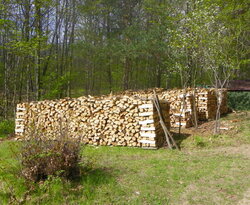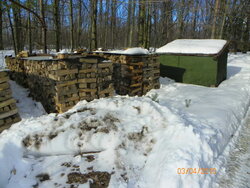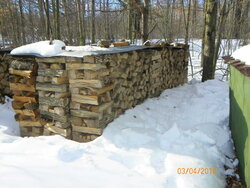My husband said to me that he read that unseasoned wood (seasoned wood to be) should be left uncovered if left on an exposed wood rack. That if covered, the covered portion will not season. Our exposed racks are presently covered because of winter rain/snow, except one. One rack is under a section of porch uncovered and does get wet from the elements when water drains between the flooring boards .
What say you.
What say you.


 , the wood going in there stays out in the elements as long as possible. I wait for a dry spell late summer, then load the shed with at least 2 yr. old c/s/s.
, the wood going in there stays out in the elements as long as possible. I wait for a dry spell late summer, then load the shed with at least 2 yr. old c/s/s.


